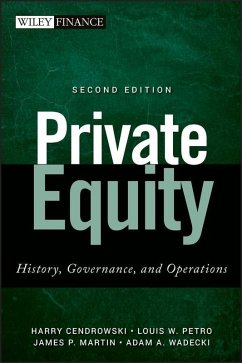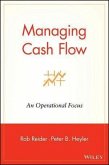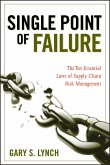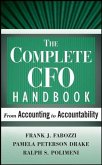Private Equity (eBook, PDF)
History, Governance, and Operations


Alle Infos zum eBook verschenken

Private Equity (eBook, PDF)
History, Governance, and Operations
- Format: PDF
- Merkliste
- Auf die Merkliste
- Bewerten Bewerten
- Teilen
- Produkt teilen
- Produkterinnerung
- Produkterinnerung

Hier können Sie sich einloggen

Bitte loggen Sie sich zunächst in Ihr Kundenkonto ein oder registrieren Sie sich bei bücher.de, um das eBook-Abo tolino select nutzen zu können.
An authoritative guide to understanding the world of private equity (PE) investing, governance structures, and operational assessments of PE portfolio companies An essential text for any business/finance professional's library, Private Equity: History, Governance, and Operations, Second Edition begins by presenting historical information regarding the asset class. This information includes historical fundraising and investment levels, returns, correlation of returns to public market indices, and harvest trends. The text subsequently analyzes PE fund and portfolio company governance structures.…mehr
- Geräte: PC
- mit Kopierschutz
- eBook Hilfe
- Größe: 2.11MB
![The Essential Controller (eBook, PDF) The Essential Controller (eBook, PDF)]() Steven M. BraggThe Essential Controller (eBook, PDF)38,99 €
Steven M. BraggThe Essential Controller (eBook, PDF)38,99 €![Lean Accounting (eBook, PDF) Lean Accounting (eBook, PDF)]() Lean Accounting (eBook, PDF)73,99 €
Lean Accounting (eBook, PDF)73,99 €![Managing Cash Flow (eBook, PDF) Managing Cash Flow (eBook, PDF)]() Rob ReiderManaging Cash Flow (eBook, PDF)111,99 €
Rob ReiderManaging Cash Flow (eBook, PDF)111,99 €![The Vest Pocket Controller (eBook, PDF) The Vest Pocket Controller (eBook, PDF)]() Steven M. BraggThe Vest Pocket Controller (eBook, PDF)19,99 €
Steven M. BraggThe Vest Pocket Controller (eBook, PDF)19,99 €![Single Point of Failure (eBook, PDF) Single Point of Failure (eBook, PDF)]() Gary S. LynchSingle Point of Failure (eBook, PDF)27,99 €
Gary S. LynchSingle Point of Failure (eBook, PDF)27,99 €![Handbook of Budgeting (eBook, PDF) Handbook of Budgeting (eBook, PDF)]() Handbook of Budgeting (eBook, PDF)185,99 €
Handbook of Budgeting (eBook, PDF)185,99 €![The Complete CFO Handbook (eBook, PDF) The Complete CFO Handbook (eBook, PDF)]() Frank J. FabozziThe Complete CFO Handbook (eBook, PDF)177,99 €
Frank J. FabozziThe Complete CFO Handbook (eBook, PDF)177,99 €-
-
-
Dieser Download kann aus rechtlichen Gründen nur mit Rechnungsadresse in A, B, BG, CY, CZ, D, DK, EW, E, FIN, F, GR, HR, H, IRL, I, LT, L, LR, M, NL, PL, P, R, S, SLO, SK ausgeliefert werden.
- Produktdetails
- Verlag: John Wiley & Sons
- Seitenzahl: 384
- Erscheinungstermin: 2. April 2012
- Englisch
- ISBN-13: 9781118225424
- Artikelnr.: 38232459
- Verlag: John Wiley & Sons
- Seitenzahl: 384
- Erscheinungstermin: 2. April 2012
- Englisch
- ISBN-13: 9781118225424
- Artikelnr.: 38232459
- Herstellerkennzeichnung Die Herstellerinformationen sind derzeit nicht verfügbar.
Module I The Private Equity Model and Historical Information
Chapter 1 Introduction to Private Equity 3
Introduction 3
What Is Private Equity? 4
General Terms and Brief Overview 5
The Limited Partner Agreement and General Partner Incentives 12
Private Equity Firm Structure and Selected Regulations 15
Types of Private Equity Investment 20
The Private Equity Fundraising Process 22
Recent Fundraising Trends 25
General Partner Investment Restrictions 26
Conclusion 28
Notes 28
Chapter 2 Overview of Historical Trends 29
Introduction 29
A Brief History of Private Equity 29
Private Equity at the Turn of the Century 33
Venture Capital Investment and Returns by Fund Stage 39
Venture Capital and Buyout Returns by Fund Size 43
Secondary Funds 45
Conclusion 48
Notes 48
Chapter 3 Trends in Private Equity 51
Introduction 51
A Changing Tide 51
Overall Industry and Fundraising Trends 54
Selected Regulatory Changes and Proposals 60
Rise of Strategic Buyers 64
Conclusion 66
Notes 66
Chapter 4 Harvesting Private Equity Investments Through Initial Public
Offering 69
Initial Public Offerings 69
Basics 69
Initial Steps in the ''Going Public'' Process 72
Role of the Securities and Exchange Commission and State Policing Bodies 75
Post-IPO Underwriter Responsibilities 77
Registration Documents 78
Historical Trends 79
Summary 83
Notes 83
Chapter 5 Legal Considerations in Initial Public Offerings 85
Introduction 85
Initial Public Offering 86
Introduction 86
Potential Advantages 87
Potential Disadvantages 89
Advance Planning Opportunities 91
Selection of Advisors 91
Securities Counsel 92
Accountants 92
Underwriters 93
Corporate Housekeeping Matters 93
Antitakeover Provisions 93
Management 94
The Initial Public Offering Process 94
Principal Parties 94
Principal Documents 96
Selling Security Holder Documents 98
The Registration Process 100
Possible Liabilities Faced by a Company and Its Directors and Officers 102
Liabilities under Federal Securities Laws 102
The Sarbanes-Oxley Act and Dodd-Frank Act 105
Public Company Filing Obligations 107
Initial Public Offering Alternative: Reverse Mergers 107
Advantages 107
Disadvantages 108
Conclusion 109
Chapter 6 Harvesting Investments Through Mergers and Acquisitions 111
Introduction 111
M&A Basics 111
Types of Takeovers 112
Reverse Takeovers 113
The Takeover Process and Financial Advisor Selection 114
Analyzing Potential Buyers 115
The Sale Process 116
The Bidding Process 118
Reaching an Agreement 119
Historical M&A Trends 120
Conclusion 122
Chapter 7 Legal Considerations in Sale Transactions 123
Introduction 123
Sale Transactions 124
Prior to the Sale Transaction 124
Use of an Investment Banker 124
Marketing Process 125
Due Diligence 125
Negotiations Phase 125
Key Deal Issues 126
Valuation and Pricing Issues 126
Special Issues in Sales of Private Equity Fund-Owned Businesses 132
Sale and Acquisition Structure 134
Merger 134
Asset Purchase 135
Stock Purchase 135
Employee Incentive Issues 135
Cash Retention Bonus 135
Stock Bonuses 136
Recapitalizations 137
The Sale Transaction Process 137
Letter of Intent 137
Disclosure of Acquisitions 138
Time and Responsibility Schedule 138
Definitive Agreements 139
Necessary Consents 140
Conclusion 142
Chapter 8 Intellectual Property and Private Equity 143
Introduction 143
Intellectual Property Rights and Remedies 143
Patents 144
Trademarks 146
Copyrights 147
Trade Secrets 148
Pre-Acquisition Due Diligence 149
Established Barriers to Entry-Evaluating Investment Value 149
Freedom to Practice-Assessing Risk of Proposed Acquisition 151
Creating Intellectual Property Value During Management 152
Leveraging and Monetizing Patent Rights 153
Bolstering Technological Advantages 153
Boosting Brand Development Efforts 154
Preserving Knowledge-Based Resources of the Workforce 155
Positioning the Exit-Reverse Due Diligence 156
Minimizing Exposure of Representations and Warranties 158
Notes 159
Module II Governance Structures in Private Equity
Chapter 9 The Private Equity Governance Model 163
Introduction 163
A New Model for Corporate Governance 163
An Analogy to Physics 167
Corporate Governance and the Management of Crisis 168
Public Corporations and the Private Equity Model 171
The Magic of the Private Equity Governance Model 173
Conclusion 175
Notes 176
Chapter 10 Value of Internal Control 177
Introduction 177
Introduction to COSO and Internal Control 178
COSO Background 178
Internal Control Defined 178
Components of Internal Control 179
Control Environment 179
Risk Assessment 182
Enterprise Risk Management 183
Control Activities 184
Information and Communication 186
Monitoring 186
Limitations of Internal Control 188
Control Objectives and Control Components 189
Effectiveness of Internal Control 190
Internal Control and the Private Equity Firm 191
Value of Internal Control for Private Equity Fund Operations 191
Value and the Control Environment 193
Value and Risk 194
Value and Control Activities 194
Value and Information and Communication 195
Value and Monitoring 195
Value of Internal Control for Target Companies 195
Operational Value 196
Financial Reporting Value 197
Compliance Value 197
Conclusion 198
Notes 198
Chapter 11 Internal Control Evaluation 201
Introduction 201
PCAOB Auditing Standard No. 5 203
Phase 1: Planning the Audit 204
Risk Assessment 206
Scaling the Audit 206
Fraud Risk 206
Using the Work of Others 207
Materiality 207
Phase 2: Using a Top-Down Approach 208
Identifying Entry-Level Controls 208
Control Environment 209
Period-End Financial Reporting Process 209
Identifying Significant Accounts and Disclosures and Their Related
Assertions 210
Understanding Likely Sources of Misstatement 211
Selecting Controls to Test 211
Phase 3: Testing Controls 211
Testing Design Effectiveness 212
Testing Operating Effectiveness 212
Relationship of Risk to the Evidence to Be Obtained 212
Special Considerations for Subsequent Yearly Audits 213
Phase 4: Evaluating Identified Deficiencies 213
Phase 5: Wrapping Up 215
Forming an Opinion 215
Obtaining Written Representations 215
Communicating Certain Matters 216
Phase 6: Reporting on Internal Controls 217
Conclusion 218
Notes 218
Chapter 12 Financial Statement Fraud and the Investment Decision 219
Introduction 219
Money Laundering 219
Categories of Fraud 221
What Is Fraud? 222
The Required Elements of Fraud 223
Financial Statement Attestation 225
Tax Return Preparation 225
Compilation 226
Review 226
Audit 226
Recommendations 227
Do Not Rely Solely on Financial Statements 227
Pay Attention to Details 228
Follow Up on Unexpected or Interesting Items 229
Maintain Professional Skepticism 229
Explanations Should Be Rational, Reasonable, and Verifiable 230
What Do the Financial Statements Say about the Entity's Ability to Meet Its
Objectives? 230
Fraud and Due Diligence Procedures 231
Background Investigation of Key Employees 231
Testing of Journal Transactions 232
Check File Metadata 232
Conclusion 233
Notes 234
Chapter 13 Professional Standards 235
Introduction 235
Federal Trade Commission 235
Federal Antitrust Legislation 235
Sherman Antitrust Act (1890) 236
Clayton Antitrust Act (1914) 236
Federal Trade Commission Act (1914) 236
Robinson-Patman Act (1936) 237
Celler-Kefauver Antimerger Act (1950) 237
Hart-Scott-Rodino Antitrust Improvement Act (1976) 237
Federal Consumer Protection Legislation 238
Securities and Exchange Commission 239
Securities Act (1933) 239
Securities Exchange Act (1934) 240
Public Utility Holding Company Act (1935) 241
Trust Indenture Act (1939) 241
Investment Company Act (1940) 242
Investment Advisers Act (1940) 242
Foreign Corrupt Practices Act (1977) 243
Sarbanes-Oxley Act (2002) 244
Public Company Accounting Oversight Board 244
Auditor Independence 245
Corporate Governance 246
CEO/CFO Certifications 247
Enhanced Financial Disclosure 247
Civil and Criminal Penalties 247
''Private'' Equity Going Public 248
Introduction to Public Standards 248
Public Company Accounting Oversight Board Standards 249
PCAOB Auditing Standard No. 1 249
PCAOB Auditing Standard No. 2 249
PCAOB Auditing Standard No. 3 250
PCAOB Auditing Standard No. 4 250
PCAOB Auditing Standard No. 5 250
The Standard Is Less Prescriptive 251
Scalable Audits 251
Audit Focus 251
Using the Work of Others 252
PCAOB Auditing Standard No. 6 252
PCAOB Auditing Standard No. 7 252
PCAOB Auditing Standard No. 8 252
PCAOB Auditing Standard No. 9 253
PCAOB Auditing Standard No. 10 253
PCAOB Auditing Standard No. 11 253
PCAOB Auditing Standard No. 12 253
PCAOB Auditing Standard No. 13 254
PCAOB Auditing Standard No. 14 254
PCAOB Auditing Standard No. 15 255
American Institute of Certified Public Accountants Auditing Standards 255
SAS 99, ''Consideration of Fraud in a Financial Statement Audit'' 256
SAS 1 Amendments 257
SAS 85 Amendments 257
SAS 82 Replacements 257
Descriptions and Characteristics of Fraud 258
Professional Skepticism 258
Engagement Team Discussions 258
Fraud Risks 259
Identifying Risks 259
Assessing Risks 259
Responding to the Risk Assessment 260
Evaluating Audit Evidence 261
Auditor Communication 263
Audit Documentation 263
SAS 104, ''Amendment to Statement on Auditing Standards No.1, 'Codification
of Auditing Standards And Procedures (''Due Professional Care in the
Performance of Work'')' '' 264
SAS 105, ''Amendment to Statement on Auditing Standards No. 95, Generally
Accepted Auditing Standards'' 265
SAS 106, ''Audit Evidence'' 265
SAS 107, ''Audit Risk and Materiality in Conducting the Audit'' 265
SAS 108, ''Planning and Supervision'' 266
SAS 109, ''Understanding the Entity and Its Environment and the Risks of
Material Misstatement'' 266
SAS 110, ''Performing Audit Procedures in Response to Assessed Risks and
Evaluation of the Audit Evidence Obtained'' 267
SAS 111, ''Amendment to Statement on Auditing Standards No. 39, 'Audit
Sampling' '' 267
SAS 112, ''Communicating Internal Control Related Matters Identified in an
Audit'' 267
SAS 113, ''Omnibus Statement on Auditing Standards'' 268
SAS 114, ''The Auditor's Communication With Those Charged With Governance''
269
SAS 116, ''Interim Financial Information'' 270
American Institute of Certified Public Accountants Accounting and Review
Standards 270
SSARS 10 271
SSARS 12 271
Institute of Internal Auditors Standards 272
Information Systems Audit and Control Association 272
Conclusion 273
Notes 273
Module III Understanding Operations
Chapter 14 Contemporary Business and Competitive Intelligence 277
Introduction 277
Contemporary Business Intelligence 278
Sources of Information 278
Public Records Searches 278
News Archives 279
Legal Proceedings 279
Patent Awards and Applications 280
Social Networking 280
Employees 280
Competitive Intelligence and the External Environment 281
Normalizing Performance 282
Cost of Capital and the Option to Invest 285
Developing Unique Intelligence 287
An Economic View of Quality 289
Developing Relationships and Navigating Crises 290
Application to Private Equity 291
Investment Decision 291
Strategic Management of Portfolio Companies 291
Exit Strategy 292
Conclusion 292
Notes 292
Chapter 15 Organizations as Humans 293
Introduction 293
Purpose of the Organization 294
Genesis 295
Development and Specialization 296
Parts of the Whole and Maturation 297
Environmental Adaptation 299
Environmental Influence and Interaction 302
Maturity Creates ''The Machine'' 303
Death of the Organization and Rebirth 304
Strengths and Weaknesses of the Organizations as Humans Metaphor 305
Conclusion 307
Notes 307
Chapter 16 Beginning the Lean Transformation 309
Introduction 309
The Origins of Lean Operations: Lean Manufacturing 310
Potential Pitfalls of Lean 311
Organizational Development 312
Discipline Building 315
What Private Equity Means for Lean 317
Conclusion 318
Note 318
Chapter 17 Performing Manufacturing Due Diligence Assessments 319
Introduction 319
Performing the Assessment 319
Employee Satisfaction 320
Customer Satisfaction and Perceived Quality 322
Corporate Vision and Mission 323
Equipment and Facility Maintenance 324
Visual Management 326
Inventory Management and Product Flow 327
Operational Data and Cost of Sales 328
Conclusion 333
Notes 333
About the Authors 335
Glossary 339
Index 345
Module I The Private Equity Model and Historical Information
Chapter 1 Introduction to Private Equity 3
Introduction 3
What Is Private Equity? 4
General Terms and Brief Overview 5
The Limited Partner Agreement and General Partner Incentives 12
Private Equity Firm Structure and Selected Regulations 15
Types of Private Equity Investment 20
The Private Equity Fundraising Process 22
Recent Fundraising Trends 25
General Partner Investment Restrictions 26
Conclusion 28
Notes 28
Chapter 2 Overview of Historical Trends 29
Introduction 29
A Brief History of Private Equity 29
Private Equity at the Turn of the Century 33
Venture Capital Investment and Returns by Fund Stage 39
Venture Capital and Buyout Returns by Fund Size 43
Secondary Funds 45
Conclusion 48
Notes 48
Chapter 3 Trends in Private Equity 51
Introduction 51
A Changing Tide 51
Overall Industry and Fundraising Trends 54
Selected Regulatory Changes and Proposals 60
Rise of Strategic Buyers 64
Conclusion 66
Notes 66
Chapter 4 Harvesting Private Equity Investments Through Initial Public
Offering 69
Initial Public Offerings 69
Basics 69
Initial Steps in the ''Going Public'' Process 72
Role of the Securities and Exchange Commission and State Policing Bodies 75
Post-IPO Underwriter Responsibilities 77
Registration Documents 78
Historical Trends 79
Summary 83
Notes 83
Chapter 5 Legal Considerations in Initial Public Offerings 85
Introduction 85
Initial Public Offering 86
Introduction 86
Potential Advantages 87
Potential Disadvantages 89
Advance Planning Opportunities 91
Selection of Advisors 91
Securities Counsel 92
Accountants 92
Underwriters 93
Corporate Housekeeping Matters 93
Antitakeover Provisions 93
Management 94
The Initial Public Offering Process 94
Principal Parties 94
Principal Documents 96
Selling Security Holder Documents 98
The Registration Process 100
Possible Liabilities Faced by a Company and Its Directors and Officers 102
Liabilities under Federal Securities Laws 102
The Sarbanes-Oxley Act and Dodd-Frank Act 105
Public Company Filing Obligations 107
Initial Public Offering Alternative: Reverse Mergers 107
Advantages 107
Disadvantages 108
Conclusion 109
Chapter 6 Harvesting Investments Through Mergers and Acquisitions 111
Introduction 111
M&A Basics 111
Types of Takeovers 112
Reverse Takeovers 113
The Takeover Process and Financial Advisor Selection 114
Analyzing Potential Buyers 115
The Sale Process 116
The Bidding Process 118
Reaching an Agreement 119
Historical M&A Trends 120
Conclusion 122
Chapter 7 Legal Considerations in Sale Transactions 123
Introduction 123
Sale Transactions 124
Prior to the Sale Transaction 124
Use of an Investment Banker 124
Marketing Process 125
Due Diligence 125
Negotiations Phase 125
Key Deal Issues 126
Valuation and Pricing Issues 126
Special Issues in Sales of Private Equity Fund-Owned Businesses 132
Sale and Acquisition Structure 134
Merger 134
Asset Purchase 135
Stock Purchase 135
Employee Incentive Issues 135
Cash Retention Bonus 135
Stock Bonuses 136
Recapitalizations 137
The Sale Transaction Process 137
Letter of Intent 137
Disclosure of Acquisitions 138
Time and Responsibility Schedule 138
Definitive Agreements 139
Necessary Consents 140
Conclusion 142
Chapter 8 Intellectual Property and Private Equity 143
Introduction 143
Intellectual Property Rights and Remedies 143
Patents 144
Trademarks 146
Copyrights 147
Trade Secrets 148
Pre-Acquisition Due Diligence 149
Established Barriers to Entry-Evaluating Investment Value 149
Freedom to Practice-Assessing Risk of Proposed Acquisition 151
Creating Intellectual Property Value During Management 152
Leveraging and Monetizing Patent Rights 153
Bolstering Technological Advantages 153
Boosting Brand Development Efforts 154
Preserving Knowledge-Based Resources of the Workforce 155
Positioning the Exit-Reverse Due Diligence 156
Minimizing Exposure of Representations and Warranties 158
Notes 159
Module II Governance Structures in Private Equity
Chapter 9 The Private Equity Governance Model 163
Introduction 163
A New Model for Corporate Governance 163
An Analogy to Physics 167
Corporate Governance and the Management of Crisis 168
Public Corporations and the Private Equity Model 171
The Magic of the Private Equity Governance Model 173
Conclusion 175
Notes 176
Chapter 10 Value of Internal Control 177
Introduction 177
Introduction to COSO and Internal Control 178
COSO Background 178
Internal Control Defined 178
Components of Internal Control 179
Control Environment 179
Risk Assessment 182
Enterprise Risk Management 183
Control Activities 184
Information and Communication 186
Monitoring 186
Limitations of Internal Control 188
Control Objectives and Control Components 189
Effectiveness of Internal Control 190
Internal Control and the Private Equity Firm 191
Value of Internal Control for Private Equity Fund Operations 191
Value and the Control Environment 193
Value and Risk 194
Value and Control Activities 194
Value and Information and Communication 195
Value and Monitoring 195
Value of Internal Control for Target Companies 195
Operational Value 196
Financial Reporting Value 197
Compliance Value 197
Conclusion 198
Notes 198
Chapter 11 Internal Control Evaluation 201
Introduction 201
PCAOB Auditing Standard No. 5 203
Phase 1: Planning the Audit 204
Risk Assessment 206
Scaling the Audit 206
Fraud Risk 206
Using the Work of Others 207
Materiality 207
Phase 2: Using a Top-Down Approach 208
Identifying Entry-Level Controls 208
Control Environment 209
Period-End Financial Reporting Process 209
Identifying Significant Accounts and Disclosures and Their Related
Assertions 210
Understanding Likely Sources of Misstatement 211
Selecting Controls to Test 211
Phase 3: Testing Controls 211
Testing Design Effectiveness 212
Testing Operating Effectiveness 212
Relationship of Risk to the Evidence to Be Obtained 212
Special Considerations for Subsequent Yearly Audits 213
Phase 4: Evaluating Identified Deficiencies 213
Phase 5: Wrapping Up 215
Forming an Opinion 215
Obtaining Written Representations 215
Communicating Certain Matters 216
Phase 6: Reporting on Internal Controls 217
Conclusion 218
Notes 218
Chapter 12 Financial Statement Fraud and the Investment Decision 219
Introduction 219
Money Laundering 219
Categories of Fraud 221
What Is Fraud? 222
The Required Elements of Fraud 223
Financial Statement Attestation 225
Tax Return Preparation 225
Compilation 226
Review 226
Audit 226
Recommendations 227
Do Not Rely Solely on Financial Statements 227
Pay Attention to Details 228
Follow Up on Unexpected or Interesting Items 229
Maintain Professional Skepticism 229
Explanations Should Be Rational, Reasonable, and Verifiable 230
What Do the Financial Statements Say about the Entity's Ability to Meet Its
Objectives? 230
Fraud and Due Diligence Procedures 231
Background Investigation of Key Employees 231
Testing of Journal Transactions 232
Check File Metadata 232
Conclusion 233
Notes 234
Chapter 13 Professional Standards 235
Introduction 235
Federal Trade Commission 235
Federal Antitrust Legislation 235
Sherman Antitrust Act (1890) 236
Clayton Antitrust Act (1914) 236
Federal Trade Commission Act (1914) 236
Robinson-Patman Act (1936) 237
Celler-Kefauver Antimerger Act (1950) 237
Hart-Scott-Rodino Antitrust Improvement Act (1976) 237
Federal Consumer Protection Legislation 238
Securities and Exchange Commission 239
Securities Act (1933) 239
Securities Exchange Act (1934) 240
Public Utility Holding Company Act (1935) 241
Trust Indenture Act (1939) 241
Investment Company Act (1940) 242
Investment Advisers Act (1940) 242
Foreign Corrupt Practices Act (1977) 243
Sarbanes-Oxley Act (2002) 244
Public Company Accounting Oversight Board 244
Auditor Independence 245
Corporate Governance 246
CEO/CFO Certifications 247
Enhanced Financial Disclosure 247
Civil and Criminal Penalties 247
''Private'' Equity Going Public 248
Introduction to Public Standards 248
Public Company Accounting Oversight Board Standards 249
PCAOB Auditing Standard No. 1 249
PCAOB Auditing Standard No. 2 249
PCAOB Auditing Standard No. 3 250
PCAOB Auditing Standard No. 4 250
PCAOB Auditing Standard No. 5 250
The Standard Is Less Prescriptive 251
Scalable Audits 251
Audit Focus 251
Using the Work of Others 252
PCAOB Auditing Standard No. 6 252
PCAOB Auditing Standard No. 7 252
PCAOB Auditing Standard No. 8 252
PCAOB Auditing Standard No. 9 253
PCAOB Auditing Standard No. 10 253
PCAOB Auditing Standard No. 11 253
PCAOB Auditing Standard No. 12 253
PCAOB Auditing Standard No. 13 254
PCAOB Auditing Standard No. 14 254
PCAOB Auditing Standard No. 15 255
American Institute of Certified Public Accountants Auditing Standards 255
SAS 99, ''Consideration of Fraud in a Financial Statement Audit'' 256
SAS 1 Amendments 257
SAS 85 Amendments 257
SAS 82 Replacements 257
Descriptions and Characteristics of Fraud 258
Professional Skepticism 258
Engagement Team Discussions 258
Fraud Risks 259
Identifying Risks 259
Assessing Risks 259
Responding to the Risk Assessment 260
Evaluating Audit Evidence 261
Auditor Communication 263
Audit Documentation 263
SAS 104, ''Amendment to Statement on Auditing Standards No.1, 'Codification
of Auditing Standards And Procedures (''Due Professional Care in the
Performance of Work'')' '' 264
SAS 105, ''Amendment to Statement on Auditing Standards No. 95, Generally
Accepted Auditing Standards'' 265
SAS 106, ''Audit Evidence'' 265
SAS 107, ''Audit Risk and Materiality in Conducting the Audit'' 265
SAS 108, ''Planning and Supervision'' 266
SAS 109, ''Understanding the Entity and Its Environment and the Risks of
Material Misstatement'' 266
SAS 110, ''Performing Audit Procedures in Response to Assessed Risks and
Evaluation of the Audit Evidence Obtained'' 267
SAS 111, ''Amendment to Statement on Auditing Standards No. 39, 'Audit
Sampling' '' 267
SAS 112, ''Communicating Internal Control Related Matters Identified in an
Audit'' 267
SAS 113, ''Omnibus Statement on Auditing Standards'' 268
SAS 114, ''The Auditor's Communication With Those Charged With Governance''
269
SAS 116, ''Interim Financial Information'' 270
American Institute of Certified Public Accountants Accounting and Review
Standards 270
SSARS 10 271
SSARS 12 271
Institute of Internal Auditors Standards 272
Information Systems Audit and Control Association 272
Conclusion 273
Notes 273
Module III Understanding Operations
Chapter 14 Contemporary Business and Competitive Intelligence 277
Introduction 277
Contemporary Business Intelligence 278
Sources of Information 278
Public Records Searches 278
News Archives 279
Legal Proceedings 279
Patent Awards and Applications 280
Social Networking 280
Employees 280
Competitive Intelligence and the External Environment 281
Normalizing Performance 282
Cost of Capital and the Option to Invest 285
Developing Unique Intelligence 287
An Economic View of Quality 289
Developing Relationships and Navigating Crises 290
Application to Private Equity 291
Investment Decision 291
Strategic Management of Portfolio Companies 291
Exit Strategy 292
Conclusion 292
Notes 292
Chapter 15 Organizations as Humans 293
Introduction 293
Purpose of the Organization 294
Genesis 295
Development and Specialization 296
Parts of the Whole and Maturation 297
Environmental Adaptation 299
Environmental Influence and Interaction 302
Maturity Creates ''The Machine'' 303
Death of the Organization and Rebirth 304
Strengths and Weaknesses of the Organizations as Humans Metaphor 305
Conclusion 307
Notes 307
Chapter 16 Beginning the Lean Transformation 309
Introduction 309
The Origins of Lean Operations: Lean Manufacturing 310
Potential Pitfalls of Lean 311
Organizational Development 312
Discipline Building 315
What Private Equity Means for Lean 317
Conclusion 318
Note 318
Chapter 17 Performing Manufacturing Due Diligence Assessments 319
Introduction 319
Performing the Assessment 319
Employee Satisfaction 320
Customer Satisfaction and Perceived Quality 322
Corporate Vision and Mission 323
Equipment and Facility Maintenance 324
Visual Management 326
Inventory Management and Product Flow 327
Operational Data and Cost of Sales 328
Conclusion 333
Notes 333
About the Authors 335
Glossary 339
Index 345







